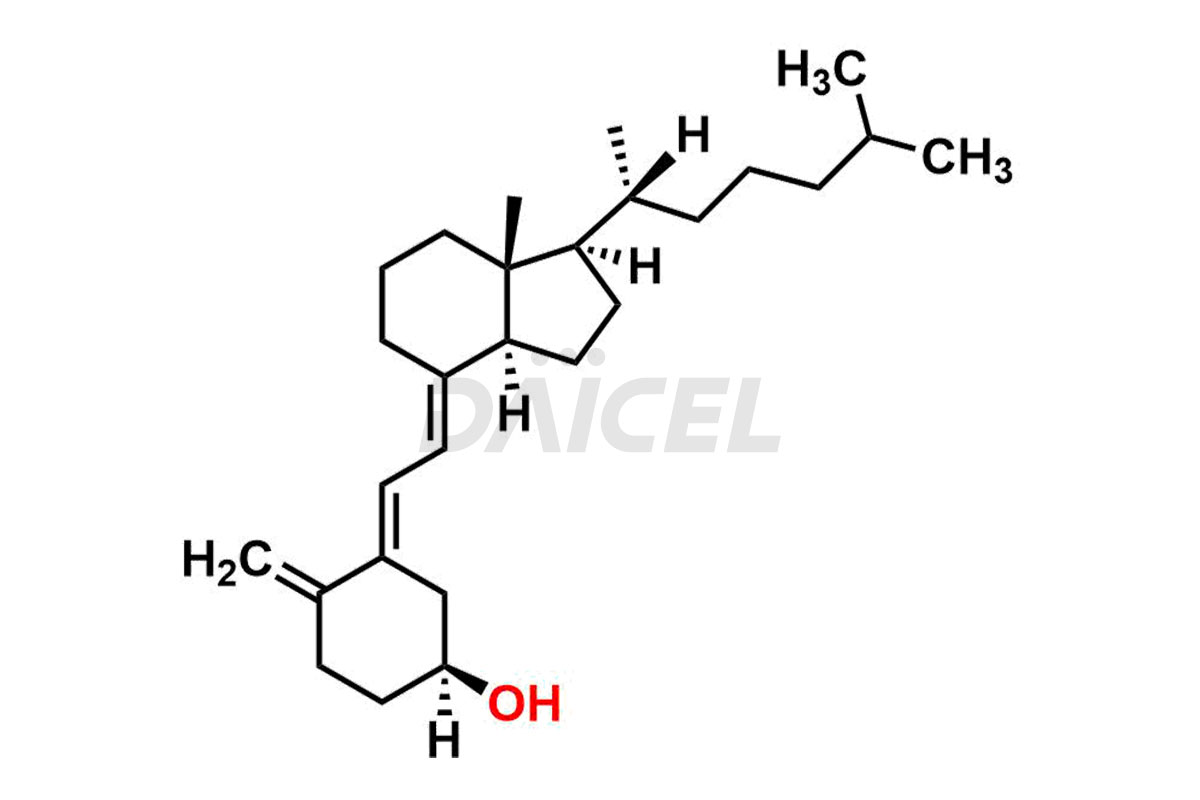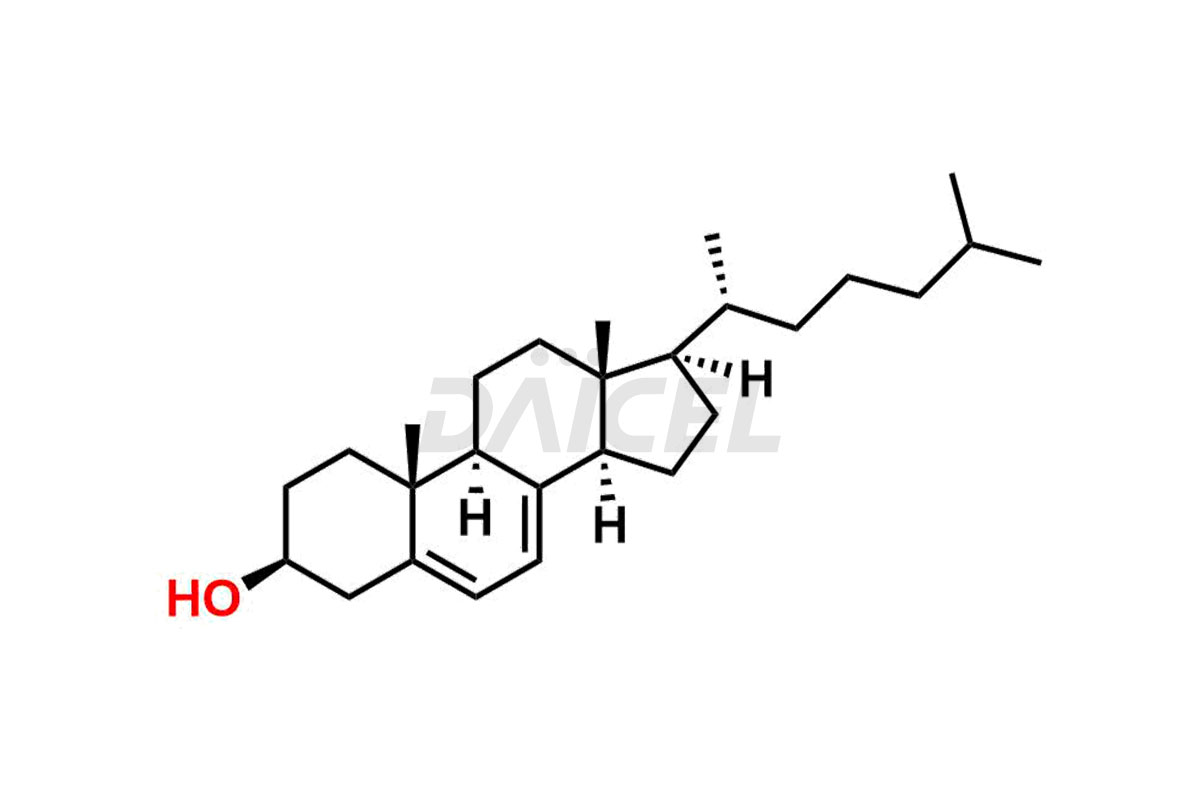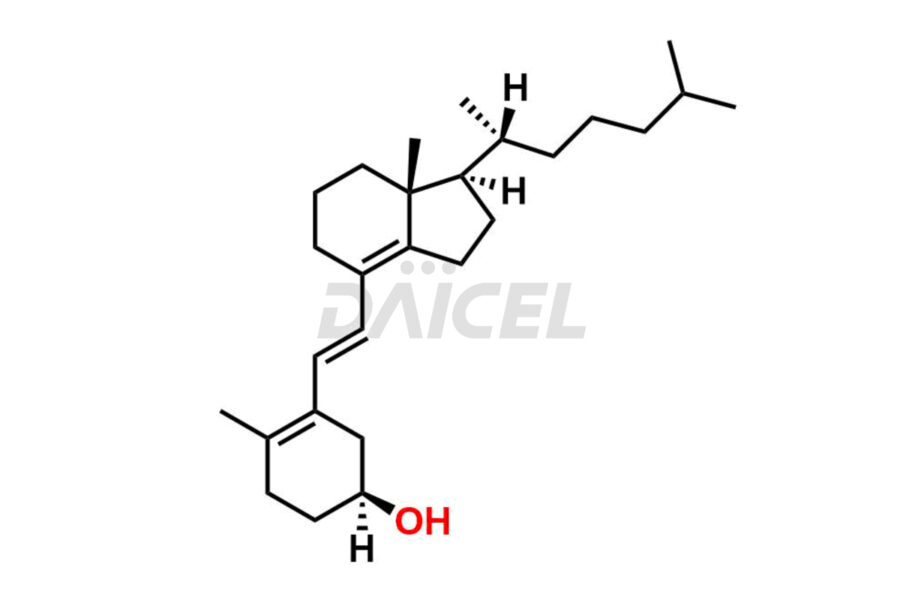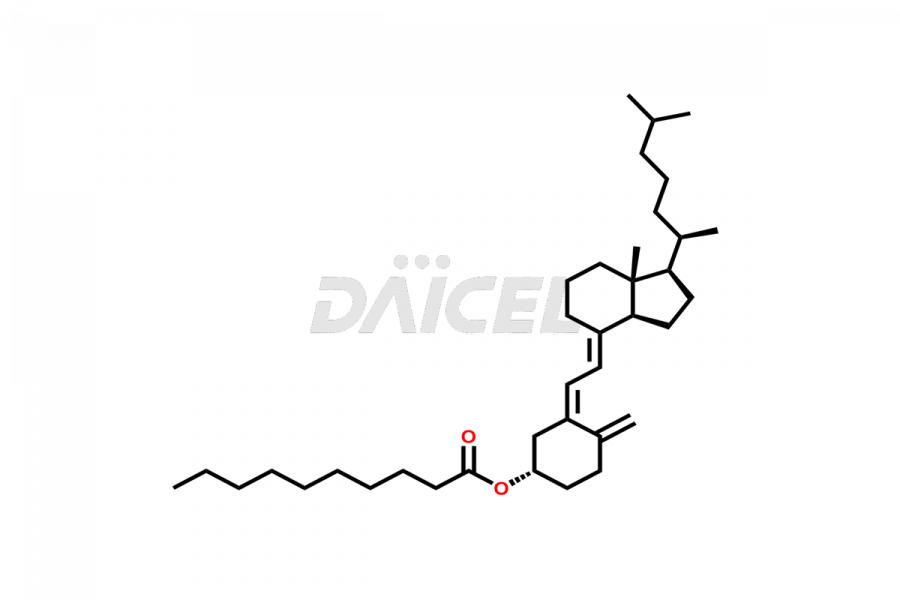Cholecalciferol
General Information
Cholecalciferol Impurities and Cholecalciferol
Daicel Pharma synthesizes high-quality Cholecalciferol impurities, Cholecalciferol EP Impurity A, Cholecalciferol EP Impurity-B, Cholecalciferol EP Impurity-D, and Vitamin D3 Decanoate, which are crucial in the analysis of the quality, stability, and biological safety of the active pharmaceutical ingredient, Cholecalciferol. Further, Daicel Pharma offers custom synthesis of Cholecalciferol impurities and delivers them globally.
Cholecalciferol [CAS: 67-97-0] is a steroid hormone produced in the skin when exposed to ultraviolet light or obtained from dietary sources. The active form of cholecalciferol, 1,25-dihydroxycholecalciferol (calcitriol), helps maintain blood calcium and phosphorus levels and the mineralization of bone.
Cholecalciferol: Use and Commercial Availability
Cholecalciferol is for dietary supplementation but also to treat various conditions, including hypothyroidism, Vitamin D deficiency, and the prevention of osteoporosis. In addition to its established role in bone mineral metabolism, several studies have linked cholecalciferol supplementation to positive outcomes in various diseases, such as cardiovascular disease, dermatologic diseases, hypertension, polycystic ovarian syndrome, type 1 and 2 diabetes, cancer, systemic lupus erythematosus, rheumatoid arthritis, and, multiple sclerosis. Cholecalciferol is available in oral and intravenous formulations, with brand names like Fosamax Plus D and Infuvite.
Cholecalciferol Structure and Mechanism of Action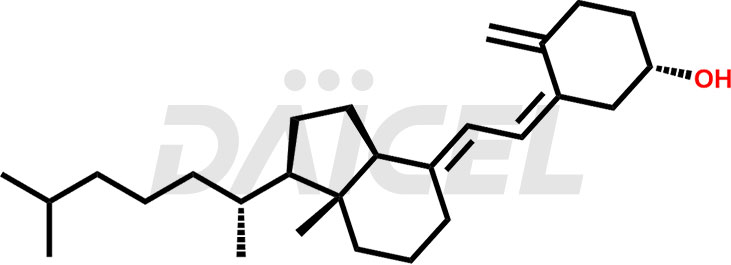
The chemical name for Cholecalciferol is 9,10-Secocholesta-5,7,10(19)-trien-3β-ol. Its chemical formula is C27H44O, and its molecular weight is approximately 384.6 g/mol.
Cholecalciferol is activated by hydroxylation processes gives 1,25- dihydroxycholecalciferol (calcitriol), the biologically active form of vitamin D. The active form of vitamin D stimulates calcium absorption in the intestine.
Cholecalciferol Impurities and Synthesis
Cholecalciferol, known as vitamin D3, can form impurities during its synthesis1 or degradation. Impurities of cholecalciferol include epimers, isomers, and oxidation products. Cholecalciferol impurities can affect its stability and potency and may harm patients. As such, quality control measures are employed during production to ensure the final product meets the required standards of purity and efficacy.
Daicel offers a Certificate of Analysis (CoA) from a cGMP-compliant analytical facility for Cholecalciferol impurity standards, Cholecalciferol EP Impurity A, Cholecalciferol EP Impurity-B, Cholecalciferol EP Impurity-D, and Vitamin D3 Decanoate. The CoA includes complete characterization data, such as 1H NMR, 13C NMR, IR, MASS, and HPLC purity2. We also provide 13C-DEPT and CHN on request. In addition, we give a complete characterization report on delivery.
Daicel has the technology and expertise to prepare any unknown Cholecalciferol impurity or degradation product. We also provide labeled compounds to quantify the efficacy of generic Cholecalciferol. Daicel offers highly pure isotope-labeled standards of Cholecalciferol for bioanalytical research and BA/BE studies with isotope data in CoA.
References
FAQ's
References
- A stabilized vitamin-d composition and a process for the production thereof, F. Hoffmann-La Roche & Co. AG, GB799068A, July 30, 1958
- Sklan, D.; Budowski, P.; Katz, M., Determination of 25-hydroxycholecalciferol by combined thin layer and gas chromatography, Analytical Biochemistry, Volume: 56, Issue: 2, Pages: 606-9, 1973
Frequently Asked Questions
What is the purpose of synthesizing Cholecalciferol impurities?
Synthesizing cholecalciferol impurities helps identify and quantify the impurities in cholecalciferol, also known as vitamin D3, used in treating vitamin D deficiency. The impurities help maintain quality control and ensure the safety and efficacy of the drug.
How are Cholecalciferol impurities detected and quantified?
The detection and quantification of Cholecalciferol impurities involve the use of analytical techniques such as high-performance liquid chromatography (HPLC) or liquid chromatography-mass spectrometry (LC-MS).
Which solvent is used for the analysis of Cholecalciferol impurities?
In general, polar solvents such as methanol, DCM (Dichloromethane), and acetonitrile are commonly used for the analysis of Cholecalciferol and its impurities. However, non-polar solvents like hexane are used to dissolve non-polar impurities such as Vitamin D3 Decanoate.
What are the temperature conditions required to store Cholecalciferol impurities?
Cholecalciferol impurities should be stored at a controlled room temperature between 2-8 ⁰C. However, impurities such as Vitamin D3 Decanoate are stored in a dark place at -20 ⁰C, as per the stability of the compound.
Note: Products protected by valid patents by a manufacturer are not offered for sale in countries having patent protection. The sale of such products constitutes a patent infringement, and its liability is at the buyer's risk.

